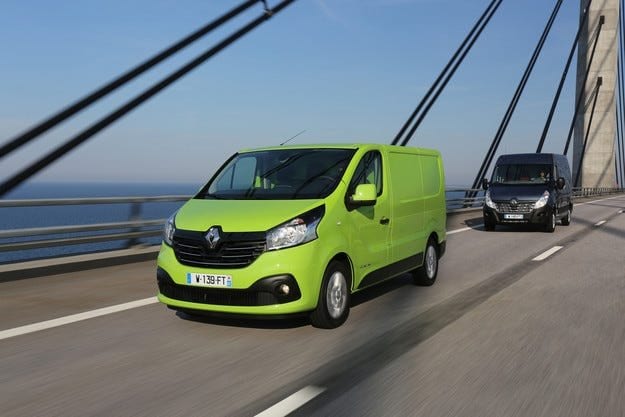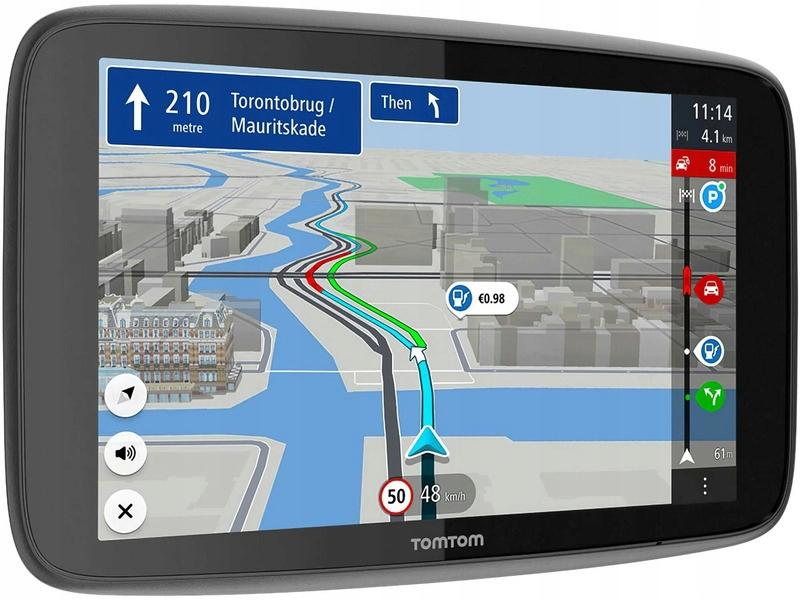
Test drive light trucks Renault: Path of the leader
Content

With the new Trafic and the redesigned Master Concern, Renault is defending its leading position in the light commercial vehicle market in Europe.
And it's not easy for the leaders... What should the manufacturer do to keep the hard-won first place in the market? Just keep going like this - at the risk of missing out on new trends and falling behind changing moods and public demands? Embark on some bold innovation? And won't that alienate customers who want "more of the same"?
Obviously, the right path is to combine the two strategies, as we see with Renault vans. Since 1998, the French company has been number 1 in this market in Europe and 16 years of leadership show that this is not a single success, but a well-thought-out policy with a number of correct decisions. Because in the van market, emotion plays a secondary role, and customers are accustomed to assessing the costs and benefits soberly before spending money on a working machine.
This explains both the main directions of the complete renovation of the Trafic model range (now the third generation of bathtubs is at the start), and the partial modernization of the larger Master. The most important improvements have been made to the engines, which have become much more economical, as well as the equipment that provides comfort and connectivity in the cabin.
Light traditions
The successful Trafic and Master series, which replaced the Renault Estafette (1980-1959) in 1980, reflect the brand's traditional commitment to urban transport. Louis Renault's first four-seater, the Voiturette Type C, introduced in 1900, received a lightweight version with a fourth closed body a year later. The recovery years after the First and Second World Wars gave birth to the Renault Type II Fourgon (1921) and Renault 1000 kg (1947-1965), respectively, the predecessor to the front-wheel drive Estafette.
Trafic and Master, originally produced in Batuya, acquired relatives in second-generation families. Opel and Nissan. Trafic equivalents roll off the assembly line in Luton, England as the Opel/Vauxhall Vivaro and in Barcelona as the Nissan Primastar. The Trafic itself also moved to Luton and Barcelona, but now the third generation is returning to its homeland, this time to the Renault plant to celebrate Renault's 50th anniversary in Sandouville. The Master and its Opel/Vauxhall counterpart Movano are still built in Batu, while the Nissan version, originally called the Interstar, now comes from Barcelona as the NV400.
Small steps
Both models have a redesigned front end and now feature the face of Renault with a large emblem on the dark horizontal bar. The characteristics of the new Trafic have become larger and more expressive, giving the impression of strength and reliability. On the other hand, fresh colors such as Laser Red, Bamboo Green and Copper Brown (the latter two are new) are more likely to suit the tastes of suppliers and couriers, mostly young bathers. Not only they, but also everyone else will like the numerous (14 in total) luggage compartments with a total volume of 90 liters. In addition, the folded back of the middle seat can be used as a table for a laptop, there is also a special clipboard on which you can attach lists of clients and supplies that are in the driver's field of vision.
Even more interesting are the proposals in the field of multimedia systems. MEDIA NAV, in combination with a 7-inch touchscreen and radio, performs all basic multimedia and navigation functions, while R-Link enriches them with additional functions related to real-time connectivity (traffic information, reading aloud e-mails, etc.) ). The R & GO app (running on Android and iOS) allows smartphones and tablets to connect to the car's multimedia system and perform functions such as 3D navigation (Copilot Premium), display of data from the on-board computer, wireless phone connection, transfer and management of media files, etc. .d.
The Trafic body, available in two lengths and heights, is oversized and holds 200–300 liters more than the previous generation. Even with nine passengers on board, the passenger version of the Trafic Combi offers 550 and 890 liters of luggage space, depending on body length. The lineup also includes Snoeks versions with a double cab, a three-seat rear seat plus a cargo volume of 3,2 resp. 4 cubic meters M. Unlike many other transformed variants, it has the advantage of being produced at the Sandouville plant, which has a very good effect on the quality and lead times.
Big step
If the changes listed so far generally correspond to the observance and continuation of good traditions, then the new line of Trafic engines is rather a revolutionary step, a transition to a new level of unification, efficiency and economy. It sounds incredible, but the 9-litre R1,6M diesel engine in its many variants powers an extremely wide range of models: the compact Mégane, the Fluence sedan, the Qashqai SUV, the Scenic compact van, the new high-end C-Class. Mercedes (C 180 BlueTEC and C 200 BlueTEC) and now the Trafic light truck with a GVW of three tons and a payload of 1,2 tons.
The four drive options (90 to 140 hp) cover the entire power range of the previous generation engines, which, however, were 2,0 and 2,5 liters and consumed about a liter more fuel per 100 kilometers. Two weaker versions (90 and 115 hp) are equipped with a variable geometry turbocharger, and a more powerful one (120 and 140 hp) is equipped with two fixed geometry cascade turbochargers. During the test drive, we tested the 115 and 140 hp variants, as the test Trafic carried 450 kg in both cases. Even with the weaker engine, there was plenty of thrust for day-to-day driving, but the Energy dCi 140 Twin Turbo's less pronounced "turbo hole" (as cascaded supercharged engines are called) and more spontaneous response made for a much more pleasant experience. . Ultimately, more headroom also results in more economical gas supply. You just get used to the same better dynamics with a lighter push on the right pedal.
This subjective impression is confirmed by the official data on expenses. According to them, the Energy dCi 140 consumes as much diesel as the base dCi 90, i.e. 6,5 l / 100 km (6,1 l with start-stop system).
In the Master, where it's still a 2010 model year upgrade and not a new generation, the advancement of the engines is also linked to the cascade charge. Instead of the three previous versions for 100, 125 and 150 hp. The 2,3-liter unit is now available in four variants - the base dCi 110, the current dCi 125 and two variants with two turbochargers - Energy dCi 135 and Energy dCi 165. According to the manufacturer, despite 15 horsepower, the most powerful version has a standard consumption in the passenger version 6,3, and in the cargo version (10,8 cubic meters) - 6,9 l / 100 km, which makes it 1,5 l per 100 km more economical than the previous one by 150 hp. .
Such a big difference cannot be attributed only to Twin Turbo technology - the start-stop system plays a role here, as well as other improvements to the engine, which has 212 new or changed parts. For example, the ESM (Energy Smart Management) system restores energy when braking or decelerating, a new combustion chamber and new intake manifolds optimize air circulation, and cross-flow coolant improves cylinder cooling. A number of technologies and measures reduce friction in the engine and also increase its efficiency.
As before, the Master is available in four lengths, two heights and three wheelbases, as well as passenger and cargo versions with single and double cab, tipper body, chassis cab, etc. Options with higher payload and longer body also can have rear-wheel drive (for a long time it is obligatory), which until now was completed with double rear wheels. Even in the longest versions, the rear drive axle can be equipped with single wheels after the model update, which increases the inner distance between the wings by 30 centimeters. This seemingly small change allows up to five pallets to be placed in the cargo compartment, which is of great importance for some types of transport services. In addition, with single wheels, consumption is reduced by about half a liter per 100 km due to less friction, drag and weight.
This makes it clear how Renault is defending its leadership in the European light truck market. The combination of small steps involving individual parts and bold steps in terms of cost and technology is profitable in an area where every detail can be unexpectedly important in a purchasing decision.
Text: Vladimir Abazov
Photo: Vladimir Abazov, Renault
